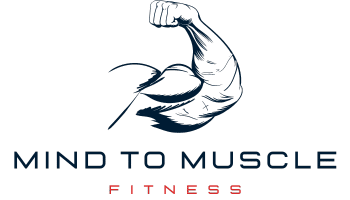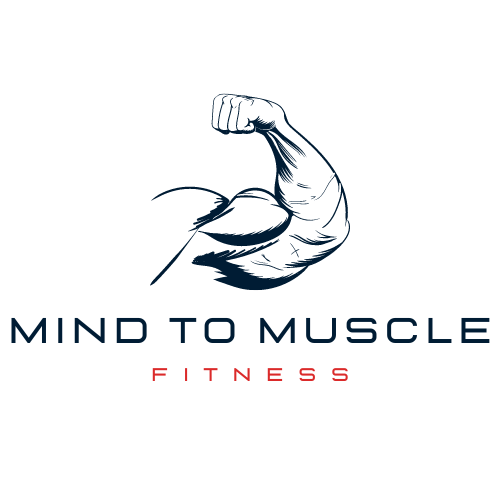Table of Contents
ToggleFeel like you’ve hit a muscle-building plateau? The secret to reigniting that growth might just lie in the rhythm of your reps. Welcome to the dynamic world of Rep Tempo for Hypertrophy. It’s not just about lifting; it’s how you lift that can transform your physique.
The Pulse of Progress
Unlock the power of paced repetitions to maximize muscle gain. By fine-tuning the speed of your movements, you’ll tap into the full potential of every workout. It’s time to elevate your training beyond mere weights and sets.
Master Muscle Mechanics
Introducing varied tempo training—the game-changer in muscle development. Speed manipulation within your routine does wonders for growth. Dive into this deep well of untapped potential, and watch your muscles respond with vigor.
Engage, Extend, Expand
Learn how controlled lifts, sustained tension, and deliberate pacing can expedite your path to a more sculpted body. Embrace the philosophy of time under tension and see substantial gains. It’s all about the journey your muscles experience rep by rep.
Step up your game with Rep Speed Manipulation. Engage with proven strategies that resonate with beginners and pros alike. The right tempo can redefine your workout efficacy and lead to impressive results. Are you ready to take control and witness a transformation?
Essential Facts on Rep Tempo for Hypertrophy
- Rep tempo refers to the speed at which you perform a rep.
- It consists of concentric (lifting) and eccentric (lowering) phases.
- Slow tempos increase time under tension, key for muscle growth.
- Typical hypertrophy tempo is 2-3 seconds up, 2-0-3 seconds down.
- Include pauses at peak contraction for intensity.
Benefits of Controlled Rep Tempo
- Enhances muscle fiber recruitment.
- Boosts metabolic stress, a hypertrophy driver.
- Improves mind-muscle connection.
- Reduces injury risk by enforcing form.
- Increases workout variety and challenge.
Pros and Cons of Rep Tempo for Hypertrophy
Pros
- Maximizes muscle growth.
- Strengthens weak points by targeting muscles fully.
- Builds endurance within muscle groups.
- Supports strength gains with controlled movement.
Cons
- May reduce the amount of weight lifted.
- Can lead to longer workouts due to slower reps.
- Requires patience and discipline.
- Potential for overemphasis on tempo, neglecting other growth factors.
Step-by-Step Guide to Rep Tempo for Muscle Growth
Optimizing rep tempo is vital for hypertrophy. Each phase of the lift—eccentric, isometric, and concentric—affects muscles differently.
1. Understanding Rep Tempo Basics
Rep tempo refers to the speed at which you perform an exercise. It’s described using a four-digit code such as 3010:
- 3 – Eccentric phase (muscle lengthening)
- 0 – Pause at the bottom
- 1 – Concentric phase (muscle contracting)
- 0 – Pause at the top
This coding is a key tool for hypertrophy-focused training.
2. Building a Rep Tempo Plan for Hypertrophy
Here’s an example of a workout plan focused on tempo for muscle growth:
| Exercise | Sets | Reps | Tempo (Eccentric-Pause-Concentric-Pause) | Rest Interval |
|---|---|---|---|---|
| Barbell Squats | 4 | 8-10 | 4010 | 90 sec |
| Bench Press | 4 | 8-10 | 3010 | 90 sec |
| Bent-Over Rows | 4 | 8-10 | 2011 | 90 sec |
Slower eccentrics increase muscle time under tension, essential for growth.
3. Common Mistakes to Avoid
Neglecting control during the eccentric phase hinders hypertrophy. Maintain the tempo to maximize muscle stimulation.
Rushing through reps compromises form and results. Prioritize quality over quantity.
4. Real-World Benefits of Rep Tempo Training
“Slowing down the eccentric phase amplified my muscle gains. The extra tension sparked new growth,” shares a fellow athlete.
Individuals saw noticeable improvements in muscle volume when they focused on controlled tempos.
Need More Hypertrophy Tips?
Integrating rep tempo can significantly enhance muscle growth. Here are more tips:
- Mix up tempos regularly to prevent plateaus.
- Combine tempo training with adequate nutrition and rest for optimized growth.
- Consistency is key for long-term progress in hypertrophy.
Advanced Techniques in Repetition Cadence
Pushing past plateaus requires advanced strategies. A method such as varied tempos can shock muscles into growth. Implement a 3-1-1-0 tempo: three seconds down, one at the bottom, a swift one second up, and no rest at the top. This increases tension time, vital for hypertrophy.
Employ eccentric pauses for intensity. Hold mid-rep for a couple of seconds. This creates muscle-fiber microtears, crucial for regeneration. Eccentric training can boost strength and size effectively.
Customizing Speed of Execution
Adjusting the speed of lifts benefits different goals. Use a slow tempo to enhance muscle endurance. This increases metabolic stress, fostering hypertrophy. Conversely, a faster pace with explosive concentric actions can build power and functional speed.
For muscle definition, mix tempos. Begin workouts with heavy, slow reps for strength. Conclude with quicker, lighter sets for endurance. This hybrid approach can sculpt muscle detail.
Integrating Repetition Rate with Other Methods
Blend rep speed with periodization. Alternate heavy, slow-lift weeks with lighter, faster weeks. This keeps muscles guessing and growing. Introduce drop sets with a slow rep speed at the end of a workout. This deepens muscle exhaustion and promotes growth.
Combine cadence tactics with Supersets or Giant sets. This can amplify volume and intensity. Keep rest periods short to intensify the challenge.
Nutrition and Recovery for Enhanced Tempo Training
For muscle repair, consume ample protein. Aim for 1.6-2.2 grams per kilogram of body weight daily. Carbs are also key for replenishing glycogen after training.
Rest is paramount for hypertrophy. Aim for 7-9 hours of sleep for optimal recovery. Remember to rest muscles for 48 hours before targeting the same group again.
Insights from Repetition Rhythm Experts
“Change equals challenge,” states Dr. Schoenfeld, a renowned hypertrophy researcher. He suggests alternating rep tempos every 4-6 weeks to prevent adaptation.
Athlete Jane Doe adds, “Varying rep speed helped me smash through my plateau.” She advises finishing sets to failure sporadically for maximum stimulus.
Programming Rep Durations for Maximum Gains
Develop a structured plan for rep durations. For growth phases, focus on slow negatives. During strength cycles, mix in powerful concentric reps. Log your workouts, noting rep speed variations and outcomes. This data can drive progressive adaptations in your training routine.
Consider consulting with a professional coach. They can tailor rep durations to your specific needs. Coaches bring diverse techniques that can yield impressive hypertrophy results.
Mobility and Flexibility: Allies in Effective Repetition Timing
Maintain mobility for optimal lifting form. This ensures targeted muscles work harder during each rep. Stretch post-workout to promote flexibility and decrease injury risk.
Incorporate yoga or pilates on rest days. These practices can improve range of motion. Better movement leads to more effective workouts and enhanced hypertrophy outcomes.
Remember to remain consistent. Success follows those who persistently apply these rep duration strategies. Keep challenging the muscles, but also nourish and rest them to reap the rewards of your hard work.
FAQs on Rep Tempo for Hypertrophy
What is rep tempo, and why is it important for muscle growth?
Rep tempo refers to the speed at which you perform each repetition of an exercise. It’s vital for hypertrophy as varying tempos can stress muscle fibers differently and stimulate growth.
Can I use any rep tempo for all exercises?
While any tempo can be applied, it’s optimal to tailor rep speeds to the exercise. Compound movements often benefit from a moderate tempo, whereas isolation moves may use slower tempos for intensity.
Is a slower rep tempo always better for building muscle?
Not necessarily. A mix of tempos might produce better results, as fast tempos can activate fast-twitch fibers, while slower ones increase time under tension, both of which are important for muscle growth.
How long should I spend on the eccentric and concentric phases?
Typically, a slower eccentric phase, around 2-4 seconds, can enhance hypertrophy. The concentric phase can be quicker, usually 1-2 seconds, to allow muscular power and strength to play a role.
Does rep tempo affect workout intensity?
Yes, altering the tempo can significantly increase the intensity. Slower tempos heighten muscle time under tension, while a quicker tempo with explosive movements can boost power and muscular endurance.
Should beginners focus on rep tempo?
Yes, beginners should learn proper rep tempos early to maximize gains and prevent injury. Starting with a controlled, moderate pace is wise until technique is mastered.
How often should I change my rep tempo?
Changing tempos every few weeks can help to continually challenge the muscles, avoid plateaus, and keep progress steady.
Does increasing rep speed mean I should decrease weights?
Generally, yes. Faster tempos often require lighter weights to maintain form. Conversely, slower more controlled reps typically allow for using heavier weights safely.
What’s the role of isometric holds in hypertrophy?
Isometric holds increase muscle tension without movement, improving strength at specific joint angles and adding variety to stress the muscle, which can contribute to hypertrophy.
Can focusing on rep tempo reduce the risk of injury?
Yes, controlled rep tempos enforce better form and reduce momentum, which can minimize the risk of injury and encourage proper muscle engagement.
Final Thoughts
Rep tempo manipulation is a powerful technique for enhancing hypertrophy. Alternating between speeds creates varied stress on the muscles, triggering adaptation and growth. Consistently modifying your lifting tempo can break plateaus and forge sustained progress.
Moreover, mastery of rep tempos ensures workouts are effective and safe. Incorporating this practice into your training routine promises a richer muscle-building journey. So, stay patient, keep experimenting with different cadences, and watch your muscles flourish.








Average Rating